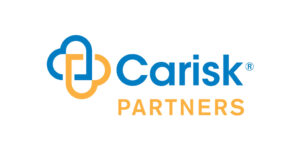Late last week, AM Best published a commentary ahead of this week’s special legislative session in Florida predicting that “without immediate and substantive long-term legislative reforms,” further insurer insolvencies are on the near-term horizon.
Counting six insurers declared insolvent already since late February, the commentary titled, “Florida Government Seeks to Repair Property Insurance Market,” notes declining capacity in a state trying to recover from Hurricane Ian, and the mushrooming size of the state-backed Citizens Property Insurance Corporation.
The AM Best commentary notes that rating downgrades and insolvencies led the Florida Office of Insurance Regulation (FLOIR) to take emergency action by establishing a temporary reinsurance arrangement with Citizens. A chart in the AM Best report shows the impact—with personal residential policies in force growing from 426,478 in 2018 to more than 1 million in 2022—a level that hadn’t been reached since 2013.
Citizens, itself is not immune to rising claims costs and will be further strained by its own losses from Hurricane Ian, states the report which notes that rising Florida claims costs aren’t just attributable to catastrophe exposures in the state, but also to a highly litigious Florida environment.
“This higher risk and higher cost environment needs to be considered to ensure there are dollars available to pay insurance claims. Without changes to reduce the costs in the system and better manage the impact of catastrophes, further insolvencies are likely,” AM Best analysts wrote in the commentary.
The state is now depending on Florida specialist carriers, which are especially vulnerable given their weaker balance sheets (compared to national carriers) and overreliance on reinsurance for balance sheet protection and short-term capital.
The December special legislative session will seek to implement long-term reforms to address challenges posed by one-way attorneys’ fees and assignment of benefits (AOB) issues and roof coverage reforms to help stabilize Florida’s property insurance market.
Related article: Florida Bills Offer Broad Attack on Insurance Costs: Legal Fees, AOBs, Reinsurance (insurancejournal.com)
“AM Best views long-term solutions as the only way to attract large national players, as well as new capital, back to the market in earnest; however, carriers are unlikely to take such a step until necessary reforms have taken hold, and once prevailing rates are sufficient to cover the risks they must bear,” the report says.
“Public policy initiatives need to consider how to make Florida attractive to national insurers and reinsurers, to incentivize them to expand their appetite for Florida risks,” said Sridhar Manyem, director, industry research and analytics, AM Best, in a media statement announcing the commentary. “Absent that, a lack of competition may continue to fuel affordability issues for primary insurers with respect to reinsurance and consumers in need of basic homeowners’ coverage.”
David Blades, AM Best associate director, industry research and analytics, added: “The outcome of the special legislative session could affect the capital allocation strategies of reinsurers that have to decide where to invest their dollars in the coming year.”
“Although claims stemming from Hurricane Ian at this point are lower than that of 2017’s Hurricane Irma, the rising reinsurance costs could reach a breaking point for many primary insurers in June 2023, when Florida property-catastrophe reinsurance programs are scheduled for renewal.”
The AM Best commentary report describes reforms already signed into law this year following a May 2022 special session—among them, the establishment of the “Reinsurance to Assist Policyholders” (RAP) program. The RAP provides $2 billion of reinsurance coverage to insurers at no cost in exchange for lower premiums for policyholders. Sitting below reinsurance coverage from the Florida Hurricane Catastrophe Fund, the RAP coverage is available in the event of a hurricane, the report says. AM Best adds that while the rate reduction requirement may provide some relief for consumers, it does not address rate inadequacy issues driven by litigation, worsening weather activity, and escalating reinsurance pricing.
The AM Best commentary also discusses legislative efforts to curb litigation abuse already this year—like a law provision prohibiting awards of attorneys’ fees to an assignee in AOB litigation, and one aimed at diminishing the use of contingency fee multipliers in fee awards. Both fell short of repealing a one-way attorney’s fee rule in the state (that permits policyholders filing lawsuits to recover legal costs when they prevail in court but prohibits insurers from doing the same). AM Best described the one-way rule as “the driving force of behind the litigation crisis in Florida.”
According to the AM Best commentary, reinsurers have shown by their actions that they don’t think the piecemeal measures will have a significant impact on social inflation.
“Some reinsurance companies have decided to drastically reduce their property cat exposures in Florida by shifting towards higher attachment points, lowering limits, and being more selective with respect to their cedents’ track records—despite a hardening market, with rate increases in the double digits,” the commentary report says.
Source: AM Best





















 California Insurers Required to Increase Home Coverage in High Risk Wildfire Areas
California Insurers Required to Increase Home Coverage in High Risk Wildfire Areas  Surviving the ‘Silver Tsunami’: Closing the Talent, Skills Gap in Underwriting
Surviving the ‘Silver Tsunami’: Closing the Talent, Skills Gap in Underwriting  Moody’s Global P/C Outlook Now Stable Despite Past-Peak Commercial Pricing
Moody’s Global P/C Outlook Now Stable Despite Past-Peak Commercial Pricing  Property and Casualty Insurance Trends for 2025
Property and Casualty Insurance Trends for 2025 




